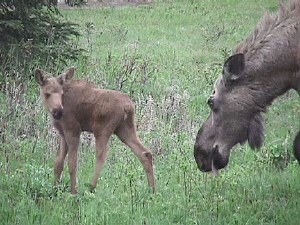THUNDER BAY -- As Ontario officials continue to assess the results of a limited aerial moose survey in the northwest, the state of Minnesota has released the outcome of its own survey.
The aerial count was conducted in the northeastern corner of the state in January.
The Minnesota Department of Natural Resources estimates the current moose population at 3.710. That's a drop of 8% from the previous year, but the change is small enough that the DNR considers the herd to to be stable at this point.
Still, the population shows no signs of recovering from the steep decline that began in 2006, when the number of moose in the northeast was estimated at 8,840.
DNR moose project leader Glenn DelGuidice said "While it is encouraging to see that the decline since 2012 has not been as steep, the apparent stability does not allow us to forecast the direction of the population's trajectory into the future."
In northwestern Ontario, the Ministry of Natural Resources and Forestry conducted a scaled-down aerial survey this winter, due to unfavourable weather conditions that made it difficult to locate moose in most of the ministry's Wildlife Management Units.
A spokesperson said the results are still being examined.
On both sides of the international border, moose herds have declined significantly in recent years due to a variety of factors, possibly including changes in habitat, climate, parasites, predation and harvesting by hunters.
Minnesota cancelled its moose hunt several years ago, while Ontario has sharply curtailed the issuing of hunting tags.
